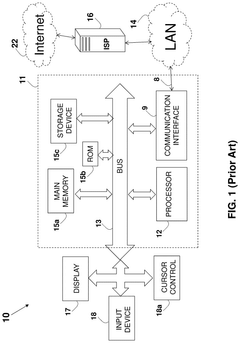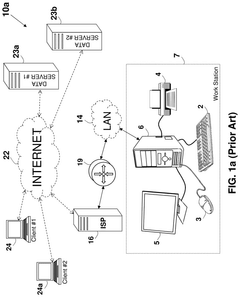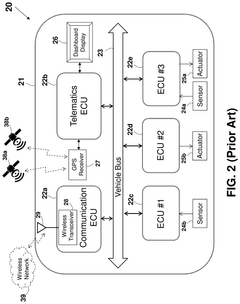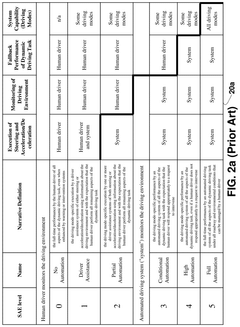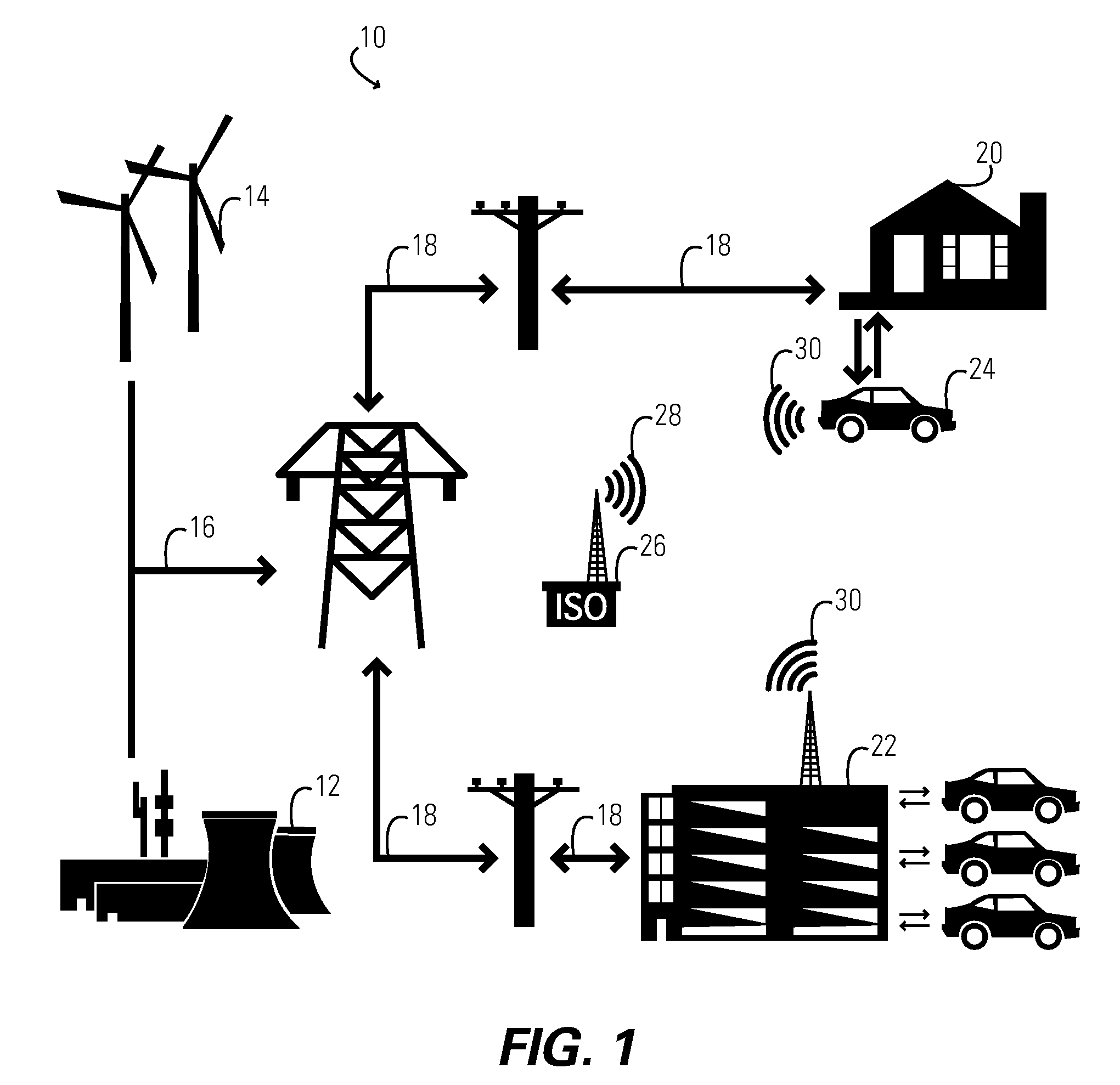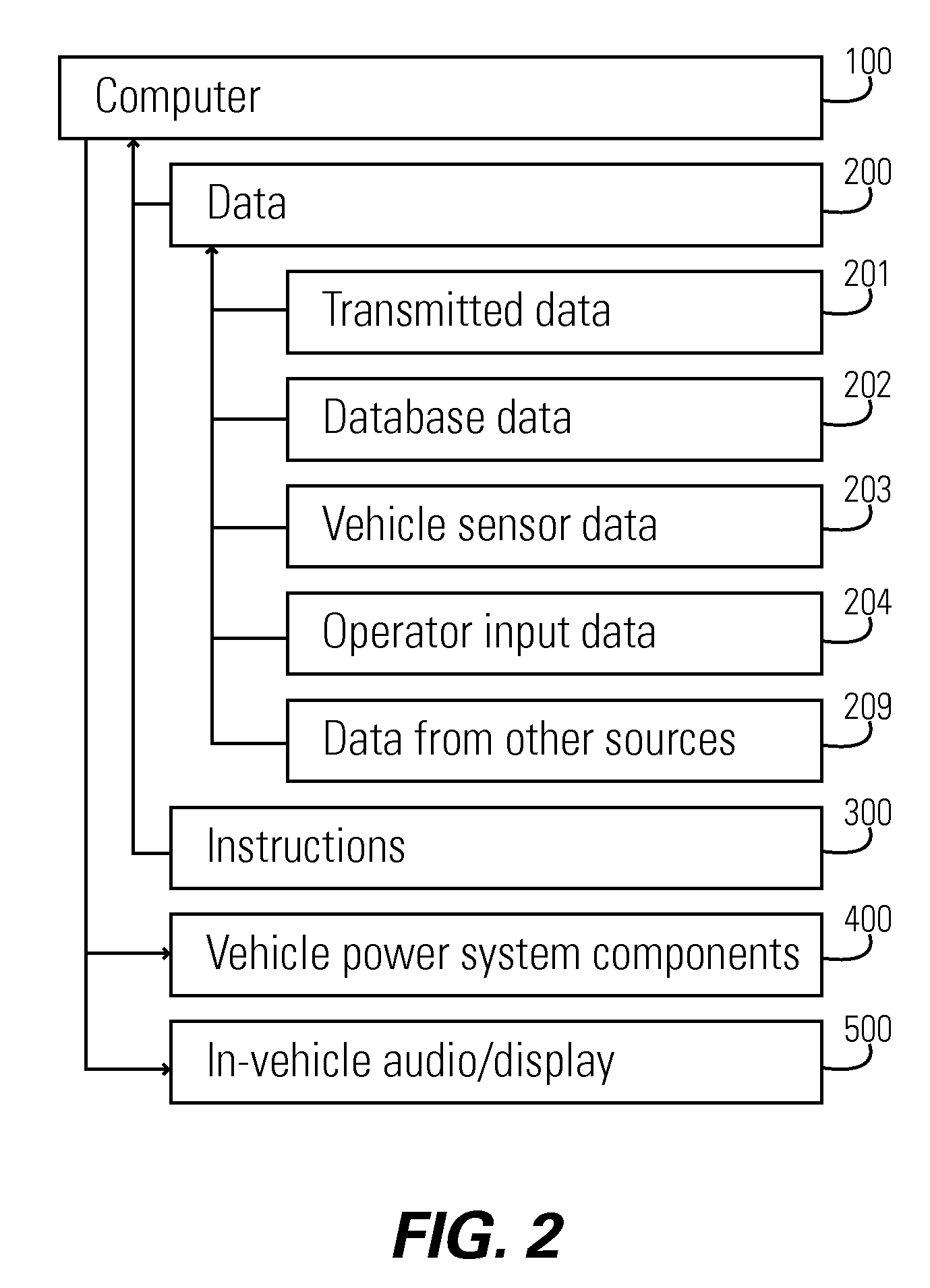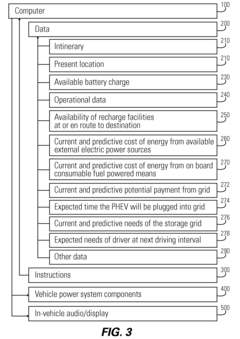Advancements in PHEV renewable energy integration
AUG 14, 20259 MIN READ
Generate Your Research Report Instantly with AI Agent
Patsnap Eureka helps you evaluate technical feasibility & market potential.
PHEV Energy Integration Background and Objectives
Plug-in Hybrid Electric Vehicles (PHEVs) have emerged as a promising solution to address the environmental concerns and energy security issues associated with conventional fossil fuel-powered vehicles. The integration of renewable energy sources into PHEV charging systems represents a significant advancement in sustainable transportation technology. This technological evolution aims to reduce the carbon footprint of the transportation sector while enhancing energy efficiency and grid stability.
The development of PHEV renewable energy integration can be traced back to the early 2000s when concerns about climate change and energy independence began to gain traction. Initially, the focus was on improving battery technology and electric drivetrain efficiency. However, as renewable energy sources became more prevalent, researchers and engineers recognized the potential for synergy between PHEVs and clean energy generation.
The primary objective of PHEV renewable energy integration is to maximize the utilization of clean energy sources for vehicle charging, thereby minimizing reliance on fossil fuel-based electricity generation. This integration seeks to create a symbiotic relationship between the transportation sector and renewable energy infrastructure, contributing to a more sustainable and resilient energy ecosystem.
Key technological goals in this field include developing smart charging systems that can communicate with the power grid to optimize charging times based on renewable energy availability. Additionally, there is a focus on enhancing energy storage capabilities to better manage the intermittent nature of renewable sources such as solar and wind power. Vehicle-to-grid (V2G) technology is another critical objective, allowing PHEVs to not only draw power from the grid but also feed excess energy back, potentially stabilizing the grid during peak demand periods.
The evolution of PHEV renewable energy integration is closely tied to advancements in smart grid technology, energy management systems, and power electronics. As these technologies progress, the integration becomes more seamless and efficient, paving the way for a future where PHEVs serve as mobile energy storage units within a larger, interconnected clean energy network.
Researchers and industry leaders are also exploring innovative concepts such as solar-powered charging stations, wireless charging infrastructure integrated with renewable sources, and the use of artificial intelligence to predict and optimize energy consumption patterns. These advancements aim to create a more robust and flexible charging ecosystem that can adapt to varying renewable energy availability and grid conditions.
The development of PHEV renewable energy integration can be traced back to the early 2000s when concerns about climate change and energy independence began to gain traction. Initially, the focus was on improving battery technology and electric drivetrain efficiency. However, as renewable energy sources became more prevalent, researchers and engineers recognized the potential for synergy between PHEVs and clean energy generation.
The primary objective of PHEV renewable energy integration is to maximize the utilization of clean energy sources for vehicle charging, thereby minimizing reliance on fossil fuel-based electricity generation. This integration seeks to create a symbiotic relationship between the transportation sector and renewable energy infrastructure, contributing to a more sustainable and resilient energy ecosystem.
Key technological goals in this field include developing smart charging systems that can communicate with the power grid to optimize charging times based on renewable energy availability. Additionally, there is a focus on enhancing energy storage capabilities to better manage the intermittent nature of renewable sources such as solar and wind power. Vehicle-to-grid (V2G) technology is another critical objective, allowing PHEVs to not only draw power from the grid but also feed excess energy back, potentially stabilizing the grid during peak demand periods.
The evolution of PHEV renewable energy integration is closely tied to advancements in smart grid technology, energy management systems, and power electronics. As these technologies progress, the integration becomes more seamless and efficient, paving the way for a future where PHEVs serve as mobile energy storage units within a larger, interconnected clean energy network.
Researchers and industry leaders are also exploring innovative concepts such as solar-powered charging stations, wireless charging infrastructure integrated with renewable sources, and the use of artificial intelligence to predict and optimize energy consumption patterns. These advancements aim to create a more robust and flexible charging ecosystem that can adapt to varying renewable energy availability and grid conditions.
Renewable Energy Market Demand for PHEVs
The market demand for renewable energy integration in Plug-in Hybrid Electric Vehicles (PHEVs) has been steadily growing, driven by increasing environmental awareness, government regulations, and advancements in technology. As consumers become more conscious of their carbon footprint, the demand for cleaner transportation options has surged, positioning PHEVs as a viable solution that bridges the gap between conventional vehicles and fully electric ones.
The global PHEV market has experienced significant growth in recent years, with sales increasing across major automotive markets. This growth is particularly pronounced in regions with strong renewable energy infrastructure and supportive government policies. Countries like Norway, the Netherlands, and China have seen substantial uptake of PHEVs, largely due to their robust charging networks and incentives for eco-friendly vehicles.
The integration of renewable energy in PHEVs is becoming a key selling point for manufacturers. Consumers are increasingly seeking vehicles that can not only reduce their reliance on fossil fuels but also actively utilize clean energy sources. This demand is driving innovation in vehicle-to-grid (V2G) technology, allowing PHEVs to not only draw power from renewable sources but also potentially feed excess energy back into the grid during peak demand periods.
The market for renewable energy-integrated PHEVs is also being bolstered by corporate and fleet buyers. Many companies are adopting sustainability goals that include transitioning their vehicle fleets to more environmentally friendly options. PHEVs with advanced renewable energy integration capabilities are becoming an attractive choice for these buyers, offering a balance between operational flexibility and environmental responsibility.
Furthermore, the synergy between PHEVs and smart grid technologies is creating new market opportunities. As power grids become more intelligent and capable of managing bidirectional energy flows, the value proposition of PHEVs as mobile energy storage units increases. This is particularly appealing in regions prone to power outages or with high renewable energy penetration, where PHEVs can serve as backup power sources or help balance grid loads.
The renewable energy market demand for PHEVs is also influenced by broader energy sector trends. As the cost of renewable energy generation continues to decline and grid infrastructure improves, the economic case for integrating these technologies into PHEVs becomes stronger. This is leading to increased collaboration between automotive manufacturers, energy companies, and technology providers to develop more sophisticated and efficient renewable energy integration solutions for PHEVs.
The global PHEV market has experienced significant growth in recent years, with sales increasing across major automotive markets. This growth is particularly pronounced in regions with strong renewable energy infrastructure and supportive government policies. Countries like Norway, the Netherlands, and China have seen substantial uptake of PHEVs, largely due to their robust charging networks and incentives for eco-friendly vehicles.
The integration of renewable energy in PHEVs is becoming a key selling point for manufacturers. Consumers are increasingly seeking vehicles that can not only reduce their reliance on fossil fuels but also actively utilize clean energy sources. This demand is driving innovation in vehicle-to-grid (V2G) technology, allowing PHEVs to not only draw power from renewable sources but also potentially feed excess energy back into the grid during peak demand periods.
The market for renewable energy-integrated PHEVs is also being bolstered by corporate and fleet buyers. Many companies are adopting sustainability goals that include transitioning their vehicle fleets to more environmentally friendly options. PHEVs with advanced renewable energy integration capabilities are becoming an attractive choice for these buyers, offering a balance between operational flexibility and environmental responsibility.
Furthermore, the synergy between PHEVs and smart grid technologies is creating new market opportunities. As power grids become more intelligent and capable of managing bidirectional energy flows, the value proposition of PHEVs as mobile energy storage units increases. This is particularly appealing in regions prone to power outages or with high renewable energy penetration, where PHEVs can serve as backup power sources or help balance grid loads.
The renewable energy market demand for PHEVs is also influenced by broader energy sector trends. As the cost of renewable energy generation continues to decline and grid infrastructure improves, the economic case for integrating these technologies into PHEVs becomes stronger. This is leading to increased collaboration between automotive manufacturers, energy companies, and technology providers to develop more sophisticated and efficient renewable energy integration solutions for PHEVs.
PHEV-Renewable Energy Integration Challenges
The integration of Plug-in Hybrid Electric Vehicles (PHEVs) with renewable energy sources presents several significant challenges that need to be addressed for successful implementation. One of the primary obstacles is the intermittent nature of renewable energy sources, such as solar and wind power. This variability can lead to mismatches between energy generation and PHEV charging demands, potentially causing grid instability and inefficient energy utilization.
Another major challenge lies in the development of smart charging infrastructure capable of managing the complex interactions between PHEVs and renewable energy sources. This infrastructure must be able to optimize charging schedules based on renewable energy availability, grid conditions, and user preferences, while also ensuring grid stability and minimizing costs.
The need for advanced energy management systems poses a significant technical hurdle. These systems must be capable of real-time monitoring, forecasting, and control of both renewable energy generation and PHEV charging patterns. Implementing such systems requires sophisticated algorithms, robust communication networks, and reliable data analytics capabilities.
Grid integration is another critical challenge. As the number of PHEVs increases, the power grid must be able to accommodate the additional load without compromising stability or reliability. This may require substantial upgrades to existing grid infrastructure, including the implementation of smart grid technologies and the development of more flexible and resilient power distribution systems.
Energy storage solutions present both a challenge and an opportunity in PHEV-renewable energy integration. While large-scale energy storage systems can help balance supply and demand, their high costs and technical limitations currently hinder widespread adoption. Developing more efficient and cost-effective energy storage technologies is crucial for maximizing the benefits of renewable energy integration with PHEVs.
Standardization and interoperability issues also pose significant challenges. The lack of universal standards for charging protocols, communication interfaces, and data exchange formats can impede seamless integration between PHEVs, charging infrastructure, and renewable energy systems. Establishing industry-wide standards is essential for ensuring compatibility and facilitating large-scale deployment.
Lastly, cybersecurity concerns present a growing challenge as the integration of PHEVs and renewable energy sources relies heavily on interconnected digital systems. Protecting these systems from cyber threats and ensuring the privacy and security of user data are critical for maintaining public trust and the overall reliability of the integrated system.
Another major challenge lies in the development of smart charging infrastructure capable of managing the complex interactions between PHEVs and renewable energy sources. This infrastructure must be able to optimize charging schedules based on renewable energy availability, grid conditions, and user preferences, while also ensuring grid stability and minimizing costs.
The need for advanced energy management systems poses a significant technical hurdle. These systems must be capable of real-time monitoring, forecasting, and control of both renewable energy generation and PHEV charging patterns. Implementing such systems requires sophisticated algorithms, robust communication networks, and reliable data analytics capabilities.
Grid integration is another critical challenge. As the number of PHEVs increases, the power grid must be able to accommodate the additional load without compromising stability or reliability. This may require substantial upgrades to existing grid infrastructure, including the implementation of smart grid technologies and the development of more flexible and resilient power distribution systems.
Energy storage solutions present both a challenge and an opportunity in PHEV-renewable energy integration. While large-scale energy storage systems can help balance supply and demand, their high costs and technical limitations currently hinder widespread adoption. Developing more efficient and cost-effective energy storage technologies is crucial for maximizing the benefits of renewable energy integration with PHEVs.
Standardization and interoperability issues also pose significant challenges. The lack of universal standards for charging protocols, communication interfaces, and data exchange formats can impede seamless integration between PHEVs, charging infrastructure, and renewable energy systems. Establishing industry-wide standards is essential for ensuring compatibility and facilitating large-scale deployment.
Lastly, cybersecurity concerns present a growing challenge as the integration of PHEVs and renewable energy sources relies heavily on interconnected digital systems. Protecting these systems from cyber threats and ensuring the privacy and security of user data are critical for maintaining public trust and the overall reliability of the integrated system.
Current PHEV-Renewable Energy Integration Solutions
01 Integration of renewable energy sources with PHEV charging
This approach focuses on integrating renewable energy sources, such as solar and wind power, with PHEV charging infrastructure. It involves developing smart charging systems that can optimize the use of renewable energy for charging PHEVs, reducing reliance on the grid and lowering carbon emissions.- Integration of renewable energy sources with PHEV charging: This approach focuses on integrating renewable energy sources, such as solar and wind power, with PHEV charging infrastructure. It involves developing smart charging systems that can optimize the use of renewable energy for charging PHEVs, reducing reliance on the grid and lowering carbon emissions. These systems can also include energy storage solutions to manage intermittent renewable energy supply.
- Vehicle-to-Grid (V2G) technology for PHEVs: V2G technology enables PHEVs to not only receive power from the grid but also feed excess energy back into it. This bidirectional energy flow allows PHEVs to act as mobile energy storage units, supporting grid stability and integrating more renewable energy into the power system. V2G systems can help balance supply and demand, especially during peak hours or when renewable energy production is high.
- Smart grid integration for PHEV charging management: This approach involves developing advanced smart grid technologies to manage PHEV charging in coordination with renewable energy availability. It includes demand response systems, real-time pricing mechanisms, and predictive algorithms to optimize charging schedules based on renewable energy forecasts and grid conditions. These systems aim to minimize grid stress and maximize the use of clean energy for PHEV charging.
- Renewable energy-powered charging stations for PHEVs: This concept focuses on designing and implementing charging stations that are primarily powered by renewable energy sources. These stations may incorporate on-site solar panels, wind turbines, or other renewable energy technologies to provide clean electricity for PHEV charging. They may also include energy storage systems to ensure a consistent power supply and optimize the use of renewable energy.
- Energy management systems for PHEV and renewable energy integration: This approach involves developing sophisticated energy management systems that coordinate between PHEVs, renewable energy sources, and the power grid. These systems use advanced algorithms and artificial intelligence to optimize energy flow, predict charging demands, and balance the use of renewable and grid energy. They aim to maximize the utilization of renewable energy while ensuring reliable power supply for PHEVs and maintaining grid stability.
02 Vehicle-to-Grid (V2G) technology for PHEVs
V2G technology enables PHEVs to not only receive power from the grid but also feed excess energy back into it. This bidirectional energy flow allows PHEVs to act as mobile energy storage units, supporting grid stability and integrating more renewable energy into the power system.Expand Specific Solutions03 Smart grid management for PHEV charging
This involves developing advanced grid management systems that can efficiently distribute renewable energy to PHEV charging stations. These systems use real-time data and predictive algorithms to balance energy supply and demand, ensuring optimal use of renewable resources for PHEV charging.Expand Specific Solutions04 On-board renewable energy generation for PHEVs
This approach focuses on integrating renewable energy generation technologies directly into PHEVs. This can include solar panels on vehicle roofs or regenerative braking systems that capture and store energy during deceleration, reducing the vehicle's reliance on external charging sources.Expand Specific Solutions05 Energy management systems for PHEV-renewable integration
These systems optimize the use of renewable energy in PHEV charging by considering factors such as energy availability, grid load, and vehicle usage patterns. They can schedule charging during periods of high renewable energy generation and adjust charging rates based on grid conditions.Expand Specific Solutions
Key Players in PHEV-Renewable Energy Sector
The advancements in PHEV renewable energy integration are in a growth phase, with increasing market size and technological maturity. The competitive landscape is characterized by a mix of established automotive manufacturers and emerging technology companies. Major players like Ford, Volvo, and IBM are investing heavily in R&D, while newer entrants such as Turntide Technologies are bringing innovative solutions to the market. Universities and research institutions, including Colorado School of Mines and Industrial Technology Research Institute, are contributing to technological advancements. The market is seeing a convergence of automotive, energy, and IT sectors, with companies like SAIC GM Wuling and Chery Automobile Co. expanding their PHEV offerings and integrating renewable energy solutions.
Ford Global Technologies LLC
Technical Solution: Ford has made significant advancements in PHEV renewable energy integration through their PowerBoost hybrid powertrain technology. This system combines a 3.5-liter V6 engine with a 35-kilowatt electric motor and a 1.5-kilowatt-hour lithium-ion battery[1]. The PowerBoost technology allows for seamless switching between electric and gasoline power, optimizing fuel efficiency and reducing emissions. Ford has also implemented an intelligent power management system that uses predictive algorithms to determine the most efficient use of battery power based on driving conditions and route information[2]. Additionally, Ford is exploring vehicle-to-grid (V2G) capabilities, allowing PHEVs to not only draw power from the grid but also feed excess energy back, supporting grid stability and renewable energy integration[3].
Strengths: Advanced hybrid powertrain technology, intelligent power management, and potential V2G capabilities. Weaknesses: Limited battery capacity compared to full EVs, which may restrict all-electric range and renewable energy utilization.
Volvo Lastvagnar AB
Technical Solution: Volvo Trucks has made significant strides in PHEV renewable energy integration for heavy-duty vehicles. Their PHEV technology combines a diesel engine with an electric motor, allowing for zero-emission operations in urban areas and efficient long-haul transportation[1]. Volvo's system incorporates an advanced energy management system that optimizes the use of electric power based on route, load, and terrain data[2]. The company has also developed a unique charging solution called "Electric Range Extender," which uses the vehicle's kinetic energy to charge the battery during downhill sections, increasing overall efficiency[3]. Furthermore, Volvo is exploring the integration of renewable energy sources at their charging stations, including solar panels and wind turbines, to ensure a more sustainable energy supply for their PHEVs[4].
Strengths: Advanced energy management system, innovative charging solutions, and focus on heavy-duty applications. Weaknesses: Dependency on diesel for long-range operations, which may limit full renewable energy integration.
Core Innovations in PHEV Energy Systems
Method and Apparatus for Planning an Electric Car Trip
PatentPendingUS20240361137A1
Innovation
- A system that integrates environmental, car, and driver factors into navigation route planning using a computer system connected to the internet, utilizing sensors and data analytics to optimize routes based on real-time data.
Plugin hybrid electric vehicle with v2g optimization system
PatentActiveUS20090229900A1
Innovation
- A system that includes a plug-in hybrid electric vehicle (PHEV) with a computer that receives data on expected grid conditions and driver needs, controlling battery charging and discharging to optimize state of charge, allowing the vehicle to act as a power source or storage unit, and providing economic benefits to drivers.
Environmental Impact Assessment
The integration of renewable energy sources into Plug-in Hybrid Electric Vehicles (PHEVs) represents a significant advancement in sustainable transportation technology. This integration has profound implications for the environment, both in terms of reducing greenhouse gas emissions and mitigating other forms of pollution associated with traditional fossil fuel-based vehicles.
One of the primary environmental benefits of PHEV renewable energy integration is the reduction in carbon dioxide emissions. By utilizing renewable energy sources such as solar or wind power to charge the vehicle's battery, PHEVs can significantly decrease their carbon footprint. Studies have shown that PHEVs charged with renewable electricity can reduce lifecycle greenhouse gas emissions by up to 80% compared to conventional gasoline vehicles.
The integration of renewable energy in PHEVs also contributes to improved air quality in urban areas. As these vehicles rely more on electric power for short trips and daily commutes, they produce fewer tailpipe emissions of pollutants such as nitrogen oxides, particulate matter, and volatile organic compounds. This reduction in local air pollution can have substantial health benefits for urban populations, potentially decreasing the incidence of respiratory diseases and other pollution-related health issues.
Furthermore, the adoption of renewable energy-powered PHEVs can help alleviate the environmental impacts associated with oil extraction and transportation. By reducing dependence on fossil fuels, these vehicles contribute to the preservation of natural habitats and ecosystems that might otherwise be disrupted by oil exploration and production activities.
The environmental impact of PHEV renewable energy integration extends beyond direct emissions reductions. These vehicles can play a crucial role in supporting the broader adoption of renewable energy systems. Through vehicle-to-grid (V2G) technology, PHEVs can serve as mobile energy storage units, helping to balance the intermittent nature of renewable energy sources like solar and wind. This capability can enhance grid stability and facilitate higher penetration of renewable energy in the overall energy mix.
However, it is important to consider the full lifecycle environmental impact of PHEVs and their associated renewable energy systems. The production of batteries and solar panels, for instance, involves resource extraction and manufacturing processes that have their own environmental footprints. Ongoing research and development efforts are focused on improving the sustainability of these components, including the use of recycled materials and more efficient production methods.
In conclusion, the integration of renewable energy in PHEVs offers significant environmental benefits, particularly in terms of reducing greenhouse gas emissions and improving air quality. As technology continues to advance and renewable energy sources become more prevalent, the positive environmental impact of these vehicles is likely to increase, contributing to a more sustainable transportation sector and a cleaner environment overall.
One of the primary environmental benefits of PHEV renewable energy integration is the reduction in carbon dioxide emissions. By utilizing renewable energy sources such as solar or wind power to charge the vehicle's battery, PHEVs can significantly decrease their carbon footprint. Studies have shown that PHEVs charged with renewable electricity can reduce lifecycle greenhouse gas emissions by up to 80% compared to conventional gasoline vehicles.
The integration of renewable energy in PHEVs also contributes to improved air quality in urban areas. As these vehicles rely more on electric power for short trips and daily commutes, they produce fewer tailpipe emissions of pollutants such as nitrogen oxides, particulate matter, and volatile organic compounds. This reduction in local air pollution can have substantial health benefits for urban populations, potentially decreasing the incidence of respiratory diseases and other pollution-related health issues.
Furthermore, the adoption of renewable energy-powered PHEVs can help alleviate the environmental impacts associated with oil extraction and transportation. By reducing dependence on fossil fuels, these vehicles contribute to the preservation of natural habitats and ecosystems that might otherwise be disrupted by oil exploration and production activities.
The environmental impact of PHEV renewable energy integration extends beyond direct emissions reductions. These vehicles can play a crucial role in supporting the broader adoption of renewable energy systems. Through vehicle-to-grid (V2G) technology, PHEVs can serve as mobile energy storage units, helping to balance the intermittent nature of renewable energy sources like solar and wind. This capability can enhance grid stability and facilitate higher penetration of renewable energy in the overall energy mix.
However, it is important to consider the full lifecycle environmental impact of PHEVs and their associated renewable energy systems. The production of batteries and solar panels, for instance, involves resource extraction and manufacturing processes that have their own environmental footprints. Ongoing research and development efforts are focused on improving the sustainability of these components, including the use of recycled materials and more efficient production methods.
In conclusion, the integration of renewable energy in PHEVs offers significant environmental benefits, particularly in terms of reducing greenhouse gas emissions and improving air quality. As technology continues to advance and renewable energy sources become more prevalent, the positive environmental impact of these vehicles is likely to increase, contributing to a more sustainable transportation sector and a cleaner environment overall.
Grid Infrastructure Adaptation for PHEV Integration
The integration of Plug-in Hybrid Electric Vehicles (PHEVs) into existing grid infrastructure presents both challenges and opportunities for the energy sector. As the adoption of PHEVs continues to grow, significant adaptations to the grid infrastructure are necessary to accommodate the increased electricity demand and to leverage the potential benefits of these vehicles.
One of the primary challenges is the need for enhanced grid capacity and stability. The widespread adoption of PHEVs will lead to a substantial increase in electricity consumption, particularly during peak charging hours. To address this, utilities are investing in smart grid technologies that enable real-time monitoring and management of power distribution. These systems allow for more efficient load balancing and can help prevent localized grid overloads.
Charging infrastructure is another critical area requiring adaptation. The deployment of a comprehensive network of charging stations is essential to support PHEV adoption. This includes not only public charging stations but also the development of residential and workplace charging solutions. Advanced charging technologies, such as bidirectional charging capabilities, are being integrated to allow PHEVs to serve as distributed energy resources, potentially feeding power back into the grid during peak demand periods.
Grid operators are also focusing on improving power quality and reliability to accommodate the unique characteristics of PHEV charging. This involves the implementation of advanced power electronics and control systems to manage voltage fluctuations and harmonics introduced by PHEV chargers. Additionally, the development of standardized communication protocols between vehicles, charging stations, and the grid is crucial for seamless integration and efficient energy management.
To fully leverage the potential of PHEVs in renewable energy integration, utilities are exploring innovative demand response programs. These programs incentivize PHEV owners to charge their vehicles during off-peak hours or when renewable energy generation is high. This not only helps to balance grid load but also maximizes the utilization of renewable energy sources.
The adaptation of grid infrastructure also extends to the distribution network. Upgrades to transformers, substations, and power lines are being undertaken to handle the increased load and to enable more flexible power flow. This includes the implementation of advanced distribution management systems that can dynamically adjust power flow based on real-time demand and supply conditions.
As the grid evolves to accommodate PHEVs, cybersecurity measures are being strengthened to protect against potential vulnerabilities introduced by the increased connectivity of vehicles and charging infrastructure. This involves the development of robust security protocols and the implementation of advanced threat detection and mitigation systems.
One of the primary challenges is the need for enhanced grid capacity and stability. The widespread adoption of PHEVs will lead to a substantial increase in electricity consumption, particularly during peak charging hours. To address this, utilities are investing in smart grid technologies that enable real-time monitoring and management of power distribution. These systems allow for more efficient load balancing and can help prevent localized grid overloads.
Charging infrastructure is another critical area requiring adaptation. The deployment of a comprehensive network of charging stations is essential to support PHEV adoption. This includes not only public charging stations but also the development of residential and workplace charging solutions. Advanced charging technologies, such as bidirectional charging capabilities, are being integrated to allow PHEVs to serve as distributed energy resources, potentially feeding power back into the grid during peak demand periods.
Grid operators are also focusing on improving power quality and reliability to accommodate the unique characteristics of PHEV charging. This involves the implementation of advanced power electronics and control systems to manage voltage fluctuations and harmonics introduced by PHEV chargers. Additionally, the development of standardized communication protocols between vehicles, charging stations, and the grid is crucial for seamless integration and efficient energy management.
To fully leverage the potential of PHEVs in renewable energy integration, utilities are exploring innovative demand response programs. These programs incentivize PHEV owners to charge their vehicles during off-peak hours or when renewable energy generation is high. This not only helps to balance grid load but also maximizes the utilization of renewable energy sources.
The adaptation of grid infrastructure also extends to the distribution network. Upgrades to transformers, substations, and power lines are being undertaken to handle the increased load and to enable more flexible power flow. This includes the implementation of advanced distribution management systems that can dynamically adjust power flow based on real-time demand and supply conditions.
As the grid evolves to accommodate PHEVs, cybersecurity measures are being strengthened to protect against potential vulnerabilities introduced by the increased connectivity of vehicles and charging infrastructure. This involves the development of robust security protocols and the implementation of advanced threat detection and mitigation systems.
Unlock deeper insights with Patsnap Eureka Quick Research — get a full tech report to explore trends and direct your research. Try now!
Generate Your Research Report Instantly with AI Agent
Supercharge your innovation with Patsnap Eureka AI Agent Platform!
